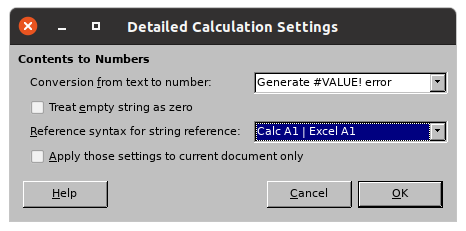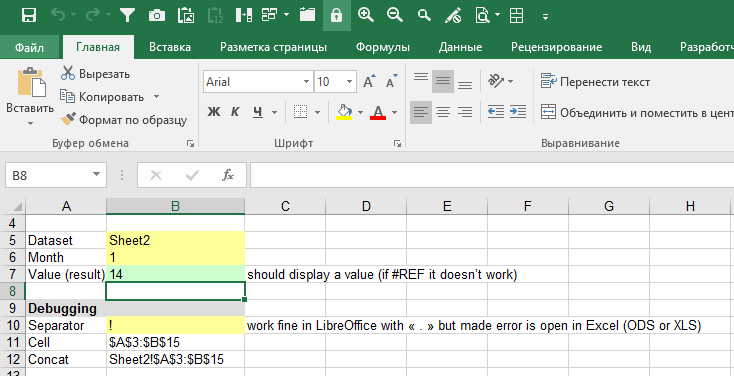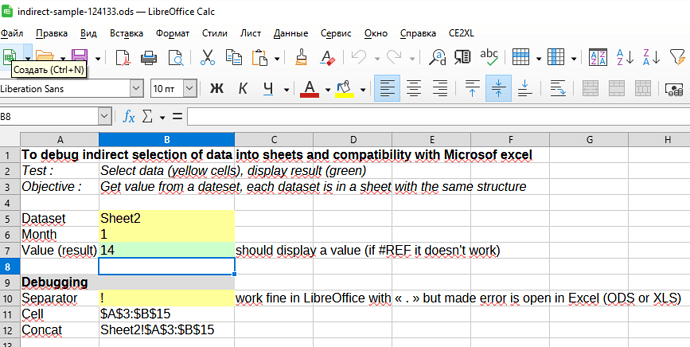Thanks (Sokol92 and Villeroy) for help on this issue.
I do not understand every aspect of your discussion but it seems it was (very) complicated.
You point me to a more precise help file (INDIRECT with second parameter 0), in this help doc it was “clear” that Libreoffice do not handle the Excel syntax in indirect strings.
So there is no clear issue and perhaps no solution to my problem.
To make i more clear i attach a full example of what i want to do :
User select a dataset in the menu (listed here some sheets)
Then choosing a value in the dataset (for example a month)
Then it should display the value for the choosen month in the corresponding dataset
indirect-sample-124133.ods (22.9 KB)
I add some intermedaire formula to help debugging
Extract from help from Libreoffice (indirect) :
https://help.libreoffice.org/latest/en-US/text/scalc/01/04060109.html?DbPAR=CALC#bm_id3153181
If you open an Excel spreadsheet that uses indirect addresses calculated from string functions, the sheet addresses will not be translated automatically. For example, the Excel address in INDIRECT("[filename]sheetname!"&B1) is not converted into the Calc address in INDIRECT(“filename#sheetname.”&B1).




